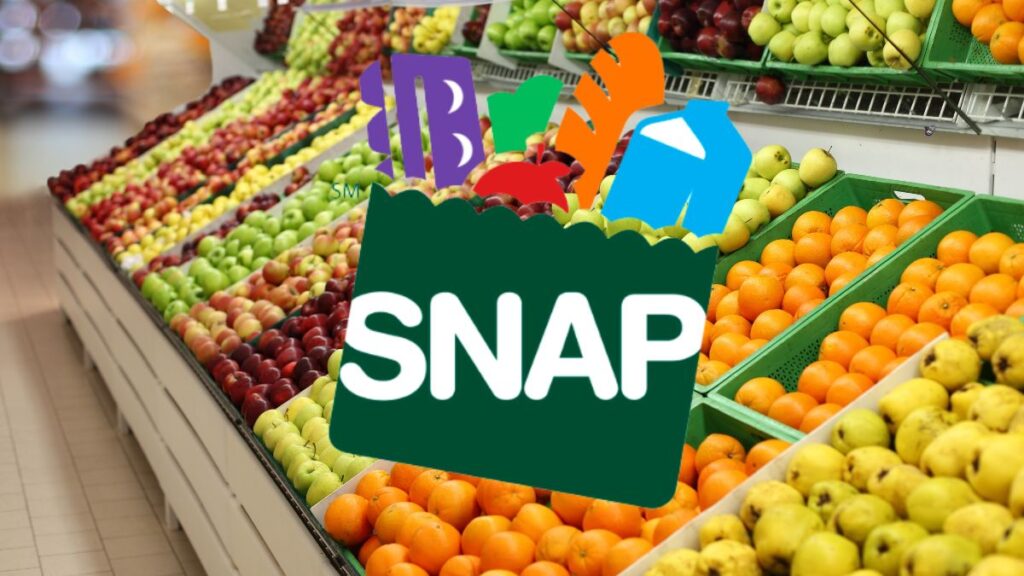Getting a COLA increase is what millions of American recipients want. SNAP beneficiaries will probably be the first ones to get extra money from USDA thanks to the annual Cost of Living Adjustment in the United States.
It is true that COLAs are not always an increase and some recipients sometimes get a reduction. That is what happened in Hawaii after the 2024 COLA. They got less money after the adjustment.
Supplemental nutrition assistance program benefits and the new COLA
Social Security and Supplemental Security Income recipients will not receive their 2025 COLA until January 2025 (SSDI or retirement) or December 31 (SSI). However, SNAP recipients will not have to wait for so long.
USDA has announced that the new Food Stamp amounts will start on October 1, 2024. So, benefits may increase if the COLA projections remain the same. But when will recipients know the new amounts?
For your information, the Fiscal Year 2024 Cost of Living Adjustments were announced on August 3, 2023. If USDA has a similar plan for 2024, SNAP recipients may learn the new Food Stamp amounts in less than 2 weeks.
Current and possible future SNAP amounts food stamps
The maximum SNAP amounts food stamps depend on the household size. For example, a single person can receive up to $291 while a family of 8 can receive up to $1,751. As you can see, there is a considerable difference.
The COLA projection for Social Security is about 2.63% claimed a report from the Senior Citizens League. If the SNAP benefits increased that amount, a family of four could receive up to 998 dollars.
A single person could receive up to $298 if there were a 2.63% COLA boost on October 1, 2024. A couple or family of 2 may get up to $549. It could be up to $786 if you are 3.
5-member households can receive up to $1,185. & members could receive up to $1,422. The largest SNAP benefit could be up to $1,797 for 8-member families.
How often do COLA adjustments impact SNAP benefits?
COLA adjustments impact SNAP benefits annually, with the adjustments taking effect on October 1st each year . The COLA is based on changes in the cost of living and impacts SNAP maximum benefit allotments, income eligibility standards, and deductions.
Key points about how COLAs impact SNAP benefits:
- SNAP COLAs occur annually on October 1st, the start of the federal fiscal year. This is earlier than Social Security COLAs, which take effect in January.
- The COLA adjusts SNAP benefits to account for inflation and changes in the cost of living. It is calculated based on the Thrifty Food Plan, which estimates the cost of providing nutritious, low-cost meals.
- In high-inflation years, like 2023 with an 8.7% COLA, SNAP households that also receive Social Security may see a decrease in their SNAP benefits. This is due to a large increase in their Social Security income. However, the Social Security increase will be larger than the SNAP decrease, resulting in a net gain in total benefits.
- Nearly half of SNAP households receive Social Security benefits, so COLAs have a widespread impact. A few households may lose SNAP eligibility if the Social Security increase puts them over the income limits.
What are the factors that determine the maximum SNAP benefit for a household?
Several key factors determine a household’s maximum SNAP benefit.
Household size:
The number of eligible household members is a primary factor. Larger households generally receive higher SNAP allotments than smaller households.
Income:
Household income, after certain deductions, must fall below a certain threshold to qualify for SNAP. The lower the income, the higher the SNAP benefit amount may be.
Deductions:
Households can deduct certain expenses from their gross income, such as a portion of earned income, child support payments, dependent care costs, medical expenses for elderly or disabled members, and excess shelter costs. These deductions can impact the final benefit amount.
Maximum allotment:
Each year, the USDA sets maximum monthly allotments for SNAP based on household size. In FY 2023, the maximum monthly allotment for a family of four is $939 .
Here’s an example of how the maximum SNAP allotment varies by household size (FY 2023) :
Household Size Maximum Monthly Allotment
- 1 $281
- 2 $516
- 3 $740
- 4 $939
- Each additional member +$211
Maximizing Your SNAP Benefits: What Determines Your Household’s Allowance?
Household size:
The maximum SNAP benefit increases with each additional person in the household. In FY 2024, the max monthly benefit is $291 for a 1-person household, $535 for 2, $766 for 3, and an extra $219 for each additional person.
Net monthly income:
Households are expected to spend about 30% of their net income (after deductions) on food. SNAP’s monthly benefit equals the max for that household size. Then, subtract 30% of their net income. Households with no net income receive the maximum benefit amount.
Deductions:
To find a household’s net income for SNAP, several deductions are applied to their gross monthly income.
- Standard deduction for basic costs
- Earnings deduction of 20% of earned income
- Child care and other dependent care deduction
- Child support deduction for legally obligated child support payments
- Medical expense deduction for expenses over $35/month for elderly or disabled members
- Excess shelter deduction for housing and utility costs
These deductions reflect that not all income is for food. SNAP eligibility and benefits are based on the net income after deductions.
